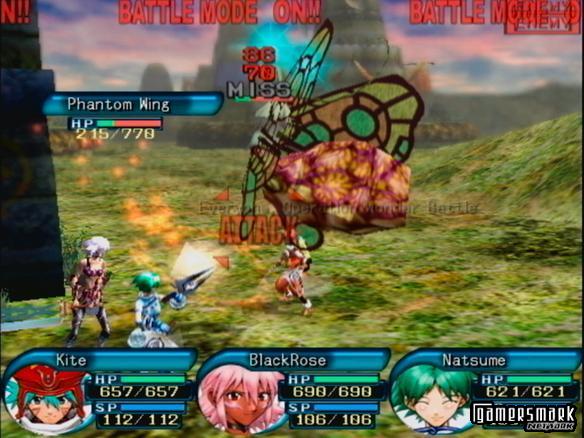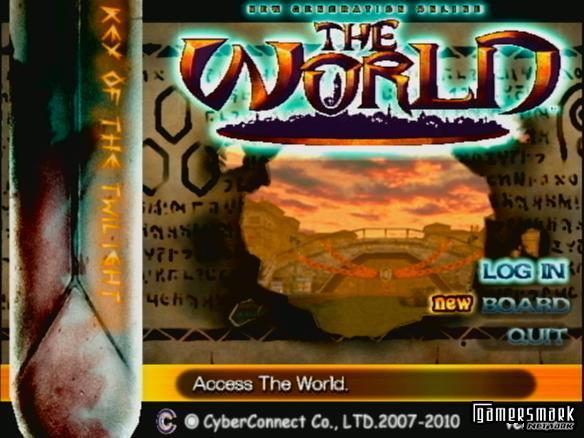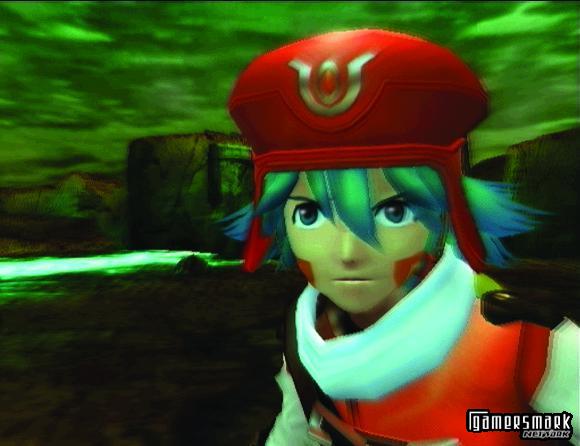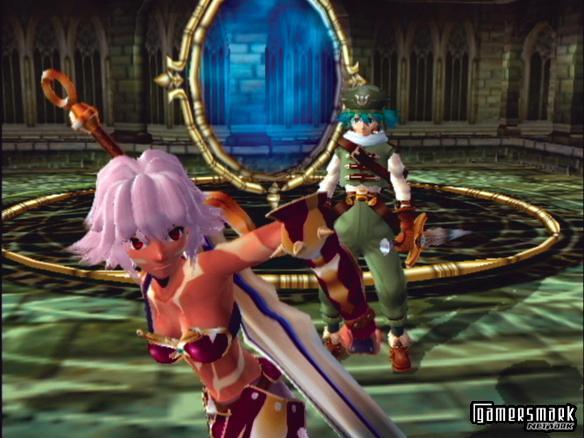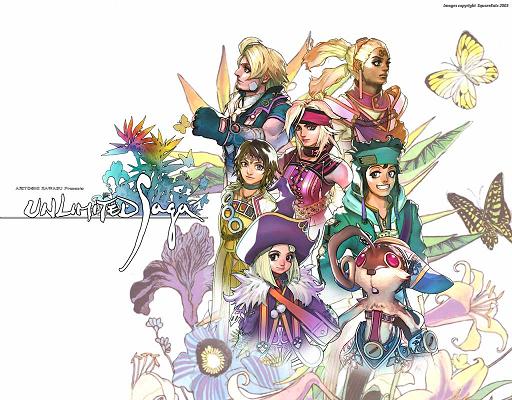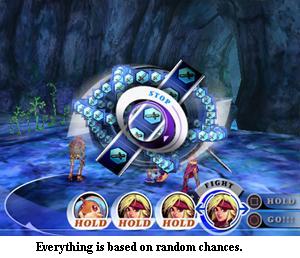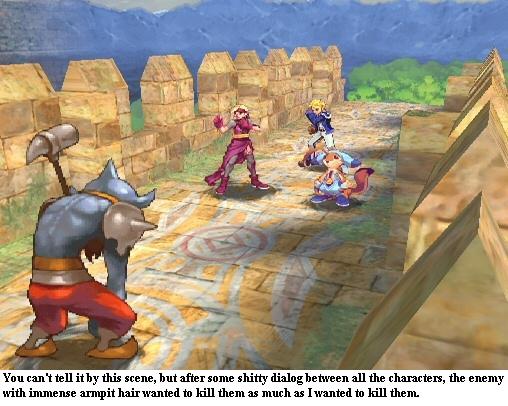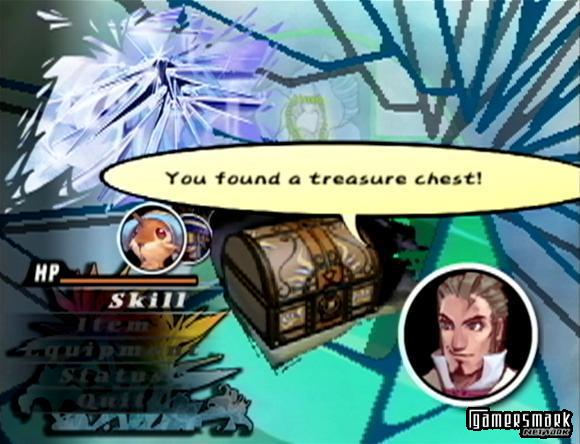Developer: Monolith Games / Publisher: Namco || Overall: 8.5/10
–
Overview:
What do you get when you mix an incredible space adventure full of drama, action, explosions, and robots with hot chicks? You get Xenosaga Episode I: Der Wille zur Macht. Xenosaga Part I is the first of eight games, and they’re all a part of the Xenogears story in one way or another (prequels and sequels, and I’m assuming a possible remake of Xenogears). Xenogears was made by Squaresoft, and Xenosaga is being made by Namco (which has a team of developers who left Squaresoft).
Boasting an immense and involving story, Xenosaga Part I takes place in the future, where humans only live in space, co-existing with cyborg counterparts, called the Realians. Though the story doesn’t revolve totally around the Realians, the events happen all because of a war that had been fought between humans and Realians. There is a whole history that the game presents for you, and trying to remember all this information to understand the rest of the game will actually revolve around the events that happened before you start playing the game. The real conflict in the game is the war between humans and aliens no one knows anything about, and a mysterious object called the Zohar.
Even though this game is an RPG, when it starts out, there isn’t much of a game to actually be played because there are so many cinematic movies. There’s more actual playing time as you get farther in the story, but this might lose some gamers early on in the game. It was like watching a really long porn movie, except there was no sex. Or there was some sex but it cut off before anyone was actually naked. (Sex in this reference would be equal to playing the game.)
Graphics:
The graphics in this game are nothing short of amazing. Everything is very polished, and looks about as real as computer graphics can look in this generation. However, there are some annoyances involving hands, and them not having moving fingers. Still, the cinematic movies are ones to really be amazed by. During action scenes, you may actually say “wow” because they are pretty intense at times.
Later on in the game, there is an integration of CG movies in actual battles.
Sound:
The sound category as a whole is definitely below average at best. Now don’t get me wrong, the voice acting in this game is top notch, and the musical score is really good, but there is an EXTREME lack of music during regular game play, more specifically map movement. There is nothing that will help you get into the mood when you’re traveling from Point A to Point B, fighting monsters along the way. And if you’ve played RPGs, this is what happens ALL the time. The lack of music here is really a sad thing, as it makes the game feel empty and less involving when the actual events of the story so far have gotten you to that point.
I don’t know if anyone else cares this much about music, but I honestly do think that music is a very important part of any RPG, to always feel like you’re involved in the game, and not just hearing footsteps on different surfaces.
Game Play:
The game is similar to most RPGs, except in battles; there are a number of different attacks you can string together to make each turn at least seem like it’s more realistic (because in other RPGs, when you say “attack” the character always attacks the same way every time). You can also make the decisions of what to actually hit your enemy with, whether it be a physical attack, or Ether (magic) type of attack. The same sort of “choosing your attack” feature is used when you’re in mechs called A.G.W.S (pronounced ay-ggs). So any Xenogears fan who doesn’t have Xenosaga will be wondering what the hell an A.G.W.S is and what happened to the Gear which was in XenoGEARS. Well, supposedly A.G.W.S are the smaller type of Gear used in the time before Xenogears (since Xenosaga Part I is a prequel). Instead of the gigantic Gear from Xenogears, the A.G.W.S. in Xenosaga are about four times bigger than humans, and can have a range of weapon types, including Melee, Guns, and Rockets/Grenades.
Now, you’re probably wondering how the backend system is. I’ll tell you right now that it is one of the most complicated ones I’ve ever seen, except it can help you out in making your character very strong, and skills-and-abilities-filled. There are several types of points you gain at the end of a battle, and you use three of the types of points to gain more Ether attacks (magic attacks), Skills (skills are extracted from actual items that can be equipped), and Techs (which are points you use to upgrade the skills you use in regular battle).
The stand-out point of this game is with no doubt its storyline. There are barely any games that will even come close to having such an elaborate storyline as Xenosaga (when all eight parts come out) will have. I’m no psychic, but if each game will be as packed with events and as much story development as the first, this gaming series will be any serious RPG-player’s dream. Or at least mine.
Another important part of the game is the Internet-like feature you can use, called the U.M.N. The U.M.N. is basically the Internet for the whole universe, and contains all the useful information you’ve been told through the game, as well as emails that contain weapons you can download as an attachment occasionally. Don’t ask me why that should make sense, it’s the future, they can do that. You can also visit areas you’ve been to before, even if they’re destroyed, or inside someone’s head. Instead of allowing you to physically travel to these places again, the areas are “saved” in the main character’s computer that is hooked up to the U.M.N. and is somehow inside of her or something.
Even though I’m saying such great things about the gameplay, there is the factor of the battles becoming very boring. Even though you can mix it up by using different attacks, the enemies you fight usually require a sort of “formula” of attacks to best defeat them. Not only this, but it usually takes a long time to defeat your enemies. Too often are there three enemies who have high HP AND can heal themselves (not that I’m saying it’s too hard – this just drags out the battles), and sometimes you have five of the same enemy to kill, and they usually take two characters attacking them before they die. Every time you go into another random battle, it becomes more laborious than actually having fun killing some stupid aliens no one knows about.
Overall:
Though it is a very good game, I am actually really disappointed in the lack of music during regular regular map movement and the use of the A.G.W.S. (compared to their use in Xenogears). Though the mechs are a major root point of the original game itself, they don’t play such a huge role in Xenosaga Part I from what I’ve seen. Perhaps their use will be more important than just retreating into them when you’re fighting a hard boss in the next game.

